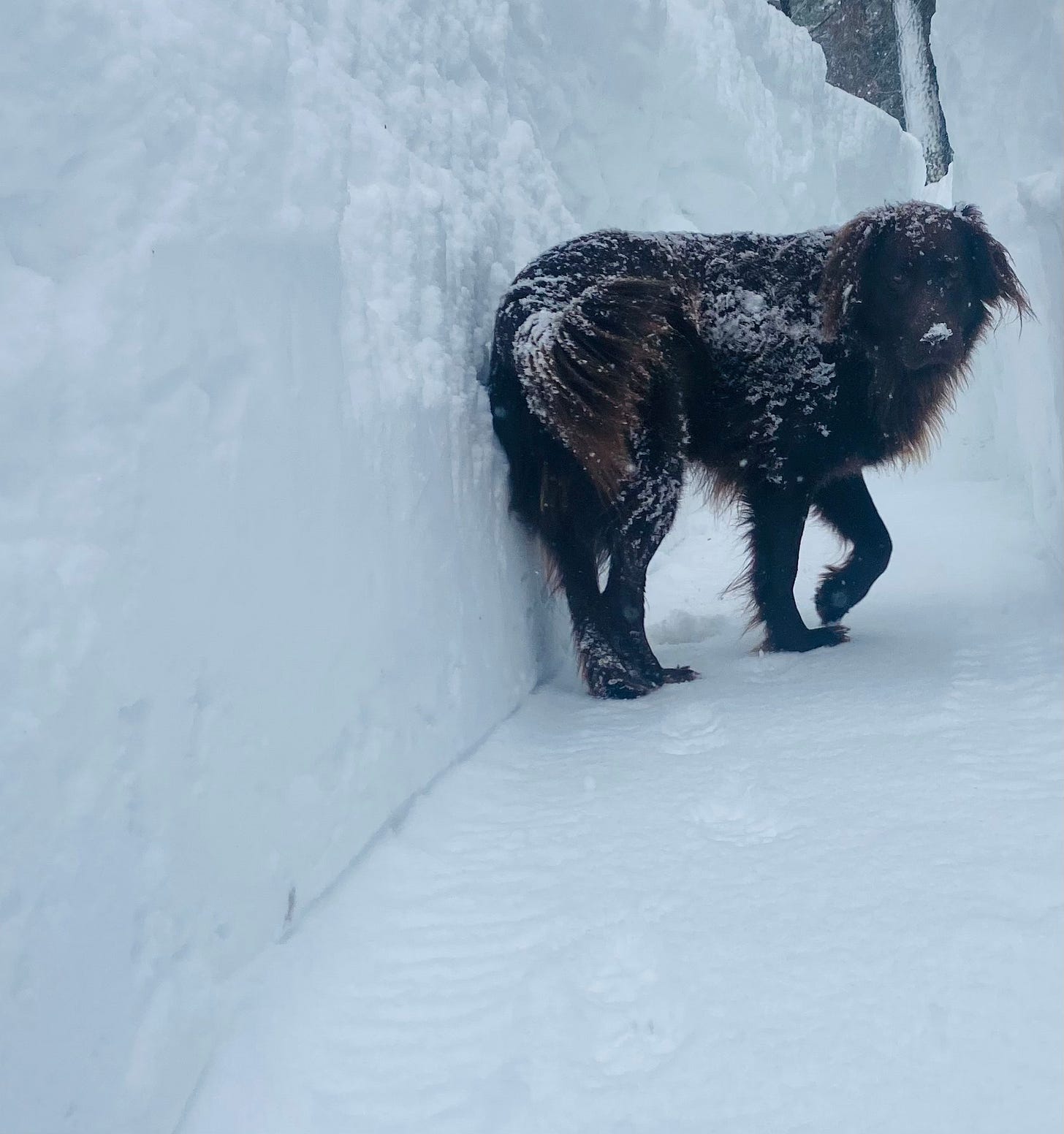I live in Lake Tahoe, California, which you may have heard has been slammed with extreme weather this winter. More than 52 feet of snow on the mountain so far. Less in town but still record- and back-breaking.
At the beginning of the season, seeing a foot or two (or three) of snowfall in a single day was exciting. It was also a welcome thing in a ski town and state that has been in a drought, off and on, for decades.
At least, that was true in December. And January.
Then came February. Snow pulled down my Internet line and threatened to pull down my power line. It piled up so high I could no longer see out my front or back window. So high that I had trouble shooting newly fallen snow over existing berms.
And it came so fast that the other day I cleared the back deck of snow, then went out front to clear the driveway; and by the time I got back in the house, planning to make a cup of tea and rest, the deck was covered again.
Then there was a sudden temperature change, bringing with it two atmospheric rivers. My phone buzzed with emergency alerts to tend to the weight of the snow on my roof while ensuring not to be under that snow when it fell. Other alerts told me to prepare for flooding.
I had already paid someone $3,000 to clear snow off my roof because I don’t have the kind of roof an amateur can climb. So now it was time to lay sandbags to keep my garage from flooding. A day later, rain switched back to snow. Time to get those sandbags back up and start the snowblower again.
So, what did I learn from all of this?
Extreme weather will demand your attention. There have been so many things I planned to get to this month (this newsletter included) that I could not get to because of the time and energy spent on dealing with our rather extraordinary winter.
And, of course, I can imagine people on the east coast — at least skiers, snowboarders, and children — wishing they had our snow because they’ve been experiencing the other extreme: too little.
But extreme is extreme.
That is the new age we live in. One way or another, many of us already have or will experience weather made more extreme, driven at least in part by a changing climate.
So, from one of the many epicenters of this year’s extreme weather, three things seem clear to me:
We need to do everything we can to mitigate climate change — which means not doing more of what we know has gotten us into this mess.
That’s why I found it baffling to read yesterday that President Biden plans to greenlight a new $8 billion oil drilling project in the North Coast of Alaska. Clean energy is an ever-more viable alternative. So why do something that will make matters worse?
There is also plenty we can do in our personal lives to support a healthy climate — perhaps above all, flexing our muscles as consumers and investors.We need to prepare for the future impacts of climate change.
For me, it’s been a steep and emotional learning curve. But I now know that preparing for the risk of wildfires in the summer and extreme snow in the winter are things I have to do.And finally — and most hopeful — this winter’s extreme weather has reminded me that we can be buoyed by each other.
Yesterday, I looked out my front door when my dog barked and saw a neighbor shoveling a trench in front of my sandbags to help redirect water away from my driveway.
If we were to talk politics, we would find ourselves at two other kinds of extremes. But some things transcend the divisiveness of politics. Real life. And real people.
And if the extreme weather that comes with a changing climate helps us remember that, well, wouldn’t that be something good?





Wow, a vivid description of what’s happening in California! Thanks for this!
The visuals. And the words. "And then came February ..."
Thank you for this look at extremes.